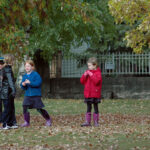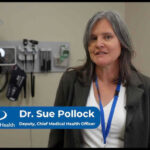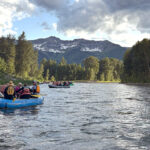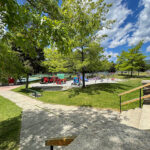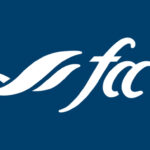Home »

Valley old growth stands marked for protection
The B.C. government said today it is taking a new step toward protecting old growth forest in the province by announcing the protection of nine areas throughout the province, including two near the Columbia Valley, one west of Spillimacheen and another west of Radium Hot Springs.
The actions government is taking are informed by the independent panel report, A New Future for Old Forests. The panel included Kimberley area resident Garry Merkel.
“For many years, there has been a patchwork approach to how old-growth forests are managed in our province, and this has caused a loss of biodiversity. We need to do better and find a path forward that preserves old-growth forests, while supporting forest workers,” said Doug Donaldson, Minister of Forests, Lands, Natural Resource Operations and Rural Development. “Those who are calling for the status quo to remain are risking crucial biodiversity loss, while those who are calling for immediate moratoriums on logging are ignoring the needs of tens of thousands of workers. Our government believes in supporting workers, while addressing the needs of old-growth forests, and these values will guide our new approach.”
In July 2019, government appointed panel members Merkel and Al Gorley to lead an old-growth strategic review. They gathered input and examined old-growth management from a variety of perspectives. On April 30, they submitted 14 recommendations to the province in their report.

Merkel, a professional forester, natural resource expert and member of the Tahltan Nation, and Gorley, a professional forester and former chair of the Forest Practices Board, outline a four-phased process government should undertake to develop and implement an old-growth strategy. The strategy consists of immediate actions in the first six months, near-term actions over six to 12 months, mid-term actions over six to 18 months and long-term actions over 18 to 36 months.
“Al and I appreciated engaging with people from all across the province in developing our recommendations,” Merkel said. “We have provided our recommendations to the minister and look forward to government’s response. We are also pleased that the province has agreed that the first step in improving old-growth management is to adopt a government-to-government approach with full involvement of Indigenous leaders, governments and organizations in proposed changes.”
Further work is also underway to protect up to 1,500 exceptionally large, individual trees under the Special Tree Protection Regulation. This builds on government’s announcement in 2019 that it would develop a permanent approach to protecting big, iconic trees.
“Through this work to manage old-growth forests, we have an opportunity to embrace our commitments under B.C.’s Declaration on the Rights of Indigenous Peoples Act and work together with Indigenous peoples in visioning on economic development and planning for land-based decisions that impact their territories,” said Scott Fraser, Minister of Indigenous Relations and Reconciliation. “We acknowledge and respect the traditional knowledge of Indigenous peoples that has been cultivated over millennia, because it is critical to a future for old-growth forests that ensures Indigenous peoples and all the generations to come continue to benefit from them.”
The engagement process resulted in one of the highest ever EngageBC responses, the Ministry of Forests, Lands, Natural Resource Operations and Rural Development reported Sept. 11, with: 200 meetings in 45 communities along with 300 written submissions, 400 published articles and papers, 9,000 emails and 18,500 completed surveys.
Government has identified nine areas of the province totalling 352,739 hectares where old forest harvesting will be immediately deferred as a first step. Future work will be undertaken to consult with Indigenous Nations.
List of old-growth areas for immediate development deferral (see above map):
- Clayoquot Sound: 260,578 hectares. Renowned for its beauty and range of resource values, typical forests of the very wet Coastal Western Hemlock zone, with western hemlock, western red cedar, yellow cedar, balsam, berries, ferns and moss.
- Crystalline Creek: 9,595 hectares. A tributary of the south fork of the Spillimacheen River, an intact watershed with wetland complexes and old and mature forests.
- H’Kusam: 1,050 hectares. Pronounced kew-sum, this easily accessible area contains outstanding examples of culturally modified trees and intact stands of old-growth cedar.
- Incomappleux Valley: 40,194 hectares. Inland rainforest with intact riparian habitats, more than 250 lichen species, lowland forests and old-growth forests estimated to be between 800 and 1,500 years old.
- McKelvie Creek: 2,231 hectares. Intact valley of old-growth temperate rainforest and intact watershed providing rich wildlife and salmon habitat.
- Seven Sisters: 4,510 hectares. A complete elevation sequence of forested ecosystems, with a blend of coastal, interior and northern features, habitat for many red- and blue-listed wildlife species.
- Skagit-Silver Daisy: 5,745 hectares. Largely intact transition forest between coastal and interior types, with species representative of both, including sub-alpine fir, western and mountain hemlock, western red and yellow cedar and Douglas fir, home to wildlife including spotted owls.
- Stockdale Creek: 11,515 hectares. Old and mature forests in an intact watershed, an important wildlife corridor with high-value grizzly bear habitat. Stockdale Creek is located in the Horsethief Creek drainage between Serrate Mountain (north), Mt. Johnson (south) and Mt. Stockdale (west).
- Upper Southgate River: 17,321 hectares. Coastal rainforest providing a rich habitat for wildlife and multiple species of salmon.
Old-growth forests provide important and unique ecological, economic, social and cultural benefits to British Columbians.
Old-growth forests are generally defined as trees more than 250 years old on the coast and more than 140 years old in the Interior.
About 57 million hectares (60%) of B.C.’s 95 million hectares of land is forested. About 13.7 million hectares or 23% of forest lands are old forests.
Nearly 10 million hectares of old forest are already under some form of protection or are not considered available for harvesting. In addition, many more areas of old growth are conserved through stewardship initiatives such as Together for Wildlife, caribou conservation, marbled murrelet and northern goshawk recovery plans and Modernized Land Use Planning.
About 3.75 million hectares of old forest lands are available for harvesting
e-KNOW
